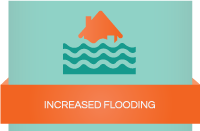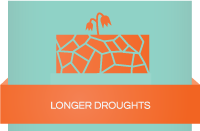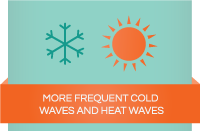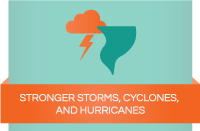The Earth's climate is changing but how has it changed so far? Of all the effects of climate change the most obvious one has been global warming, the rise in average temperatures. The Earth's average surface temperature has increased significantly since the Industrial Revolution which has caused many other long-term changes to the climate.
Climate change is not something in the far-off future, but something that we will experience in our lifetimes. Many of the impacts of climate change are already being felt around the world.
Some of those effects include: widespread melting of snow and ice around the world, rise in global sea levels, ocean acidification, coral bleaching as well as loss of biodiversity.
Scientists are also tracking changes with respect to weather patterns and extreme weather events.
Some of the effects of climate change include:
Flooding is occurring more frequently, and droughts are becoming longer. Climate change is increasing the chances of cold waves and heat waves. Storms, cyclones and hurricanes are becoming more intense in recent years. The amount of rainfall is rising in high latitudes and decreasing in most sub-tropical and temperate land areas.
These impacts are not distributed evenly across the globe. As expected, temperature changes are greater at the poles, with some regions of the Arctic warming 0.5°C in just the past 30 years. At low latitudes - those close to the equator - a greater fraction of the trapped infrared energy goes into evaporation, limiting warming but providing an increase in water vapor that pours out as more intense rains from convective storms and tropical cyclones.
The main global effects, for every 1° C increase of the Earth's average temperature, will be:
- 5-10% changes in the amount of precipitation across many regions
- 3-10% increases in the volume of rainfall during the heaviest precipitation events
- 5-10% changes in streamflow across many river basins
- 15% decreases sea ice coverage across the Arctic Ocean, with a 25% decrease in the yearly minimum extent in September
- 5-15% reductions in crop yields
More info:
Impacts of climate change - David Suzuki Foundation
Climate change impacts - Environmental Defense Fund
Climate Change: Effects - NASA
Climate change consequences - European Commission




